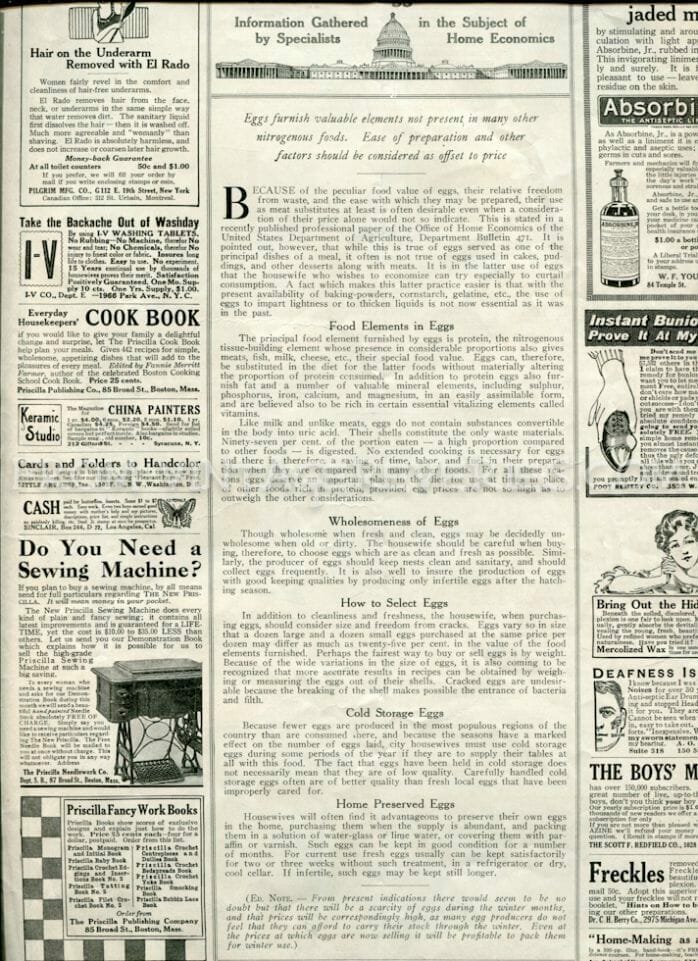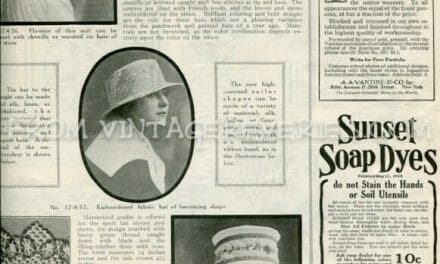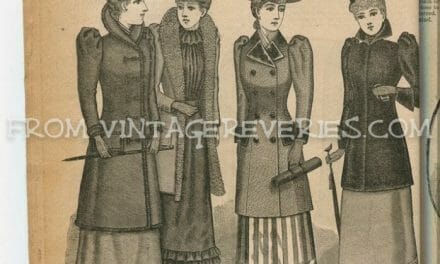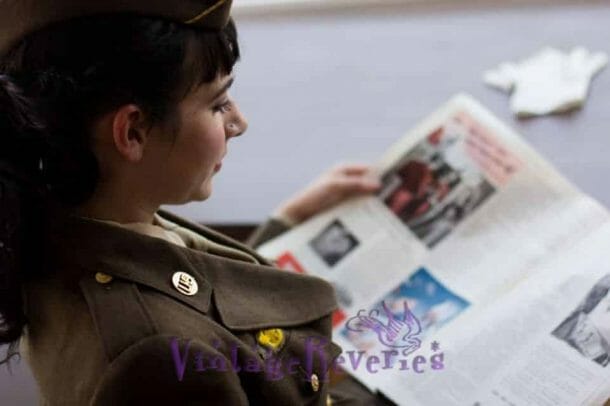
Filet Crochet Patterns and the Back Pages from the July 1917 issue of The Modern Priscilla Magazine

The July 1917 issue of The Modern Priscilla magazine offers a glimpse into the daily lives and creative pursuits of women during World War I. Alongside intricate filet crochet patterns, this issue is rich with Edwardian advertisements, recipes, and domestic tips that paint a vivid picture of life over a century ago. Published during an era of immense global shifts, The Modern Priscilla was more than just a craft magazine—it was a lifeline of inspiration and practicality for its readership, many of whom were navigating the challenges brought about by the war on both home and social fronts.
The Appeal of Filet Crochet in 1917
Filet crochet was one of the most popular crafts of the Edwardian and early 20th-century period, valued for its versatility and elegance. During this time, it adorned everything from household linens to delicate clothing details, combining function with beauty. The July 1917 patterns from The Modern Priscilla reflect women’s love for intricate, handmade lacework, reflective of the Victorian traditions still influencing Edwardian home decor. Unlike more technologically manufactured goods of the time, handcrafted items like these were cherished as tokens of skill, care, and timeless style.
The patterns featured in this issue included tablecloth edgings, pillowcases, doilies, and even decorative accents for clothing. Despite the struggles of wartime rationing, creativity persisted within homes, with crochet threads and needlework providing an affordable outlet for women to continue beautifying their spaces and wardrobes.
A Peek Behind the Pages: From Edwardian Advertisements to “Modern” Living
Beyond the crochet patterns, this Modern Priscilla issue offers a treasure trove of historical details encapsulating the cultural currents of 1917. The advertisements alone are fascinating artifacts of a society in transition. Among them is a full-color ad for Blue Jay corn relief, featuring a beautifully painted ballerina. Such advertisements emphasized grace, beauty, and refinement—ideals that still shaped the period’s perception of femininity.
This issue balances an appreciation for refinement with practical advice. The housekeeping tips reflect contemporary attitudes toward maintaining an efficient and hygienic home amidst wartime shortages. There’s also an informative article on the nutritional value of eggs, illustrating how families were encouraged to adapt their diets to maximize health and conserve resources for the war effort. “Tested Household Devices” features innovative gadgets of the time, including a vacuum-insulated beverage container and an “antiseptic nut cracker,” embodying the modern woman’s interest in convenience and efficiency.
Recipes, Practical Advice, and the Everyday Challenges of Wartime Life
Recipes from this issue offer more than culinary tips—they offer an insight into how women coped during trying times. Substitutes and ways to stretch ingredients were common themes in WWI-era cookbooks and magazines, part of broader efforts to conserve resources for soldiers overseas. Preservers, canners, and other home cooks were also crucial contributors to the war effort. This issue’s recipes emphasize the balance between nutrition and creativity, even when faced with ingredient limitations.
Educational features—such as nutritional discussions—were also essential, as women were often the family’s primary caregivers. This issue’s article on eggs, for example, highlights their high protein content and importance in economical diets. In doing so, The Modern Priscilla aimed to empower readers with knowledge that served both their families and their new, increasingly significant societal roles.
A Reflection of Larger Societal Changes in 1917
To truly appreciate The Modern Priscilla in 1917, it’s necessary to frame it in the context of its time. The publication catered to women who, because of the war, were assuming new responsibilities, both domestically and in the workforce. In July 1917, the U.S. was still adjusting to its entry into World War I, which began in April. The war ushered in dramatic changes for many American households while redefining the identity of the “modern woman.”
Magazines like The Modern Priscilla acted as conduits of stability and creativity in uncertain times. They celebrated the roles women traditionally held in the home while also arming them with knowledge and encouragement to stand resilient amid new challenges. This fusion of tradition and progress is apparent throughout this issue—whether seen in the intricate lacework patterns, the advertisements targeting products for household ease, or the advice that recognized women’s increasingly pivotal roles in shaping both families and society.
The Timeless Charm of The Modern Priscilla
Today, flipping through the pages of this issue (or even its preserved digital scans) feels like stepping back into a moment lost to time. From the Edwardian advertisements to the crochet patterns, The Modern Priscilla’s July 1917 publication offers so much more than craft ideas—it’s a slice of history. It reflects not only the tastes and values of the era but also the aspirations and concerns shared by its readers.
If you love vintage fashion, history, and the practical elegance of turn-of-the-century crafts, this issue is an undeniable gem. Beyond its patterns and projects, it opens a window to the lives of women navigating a world in turmoil—their ingenuity, creativity, and resilience forever captured on its pages.
































You must be logged in to post a comment.